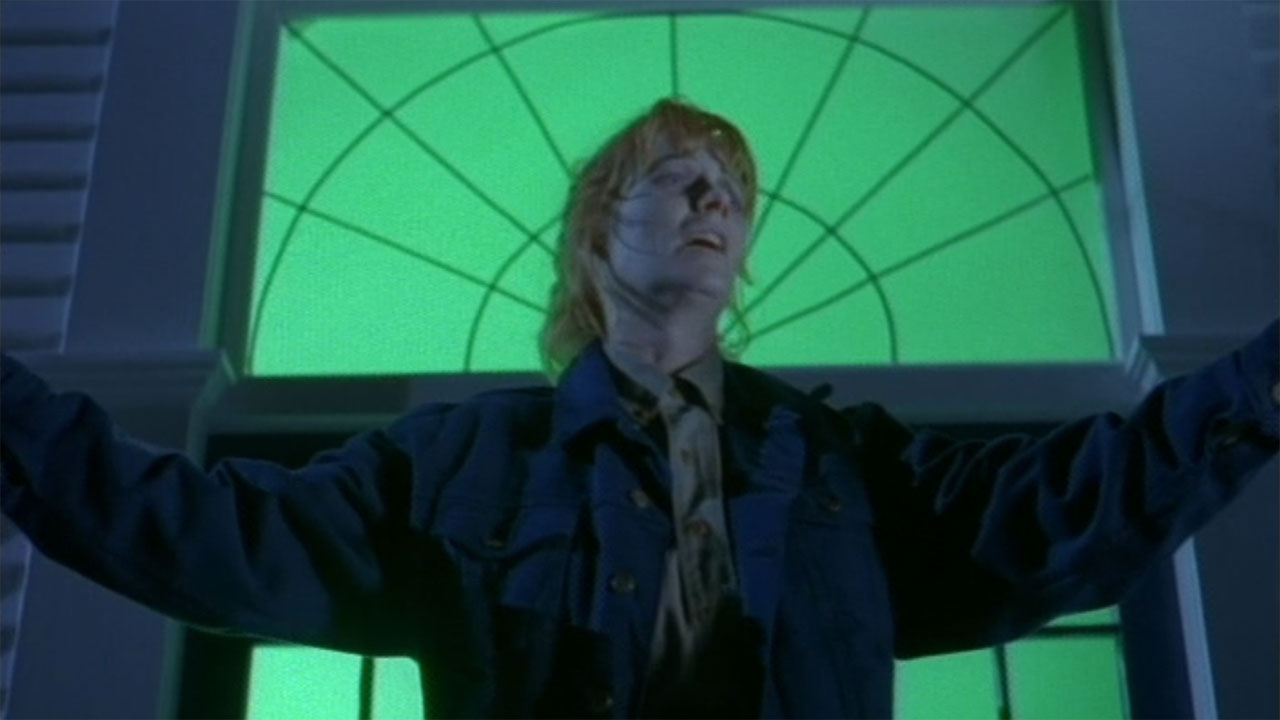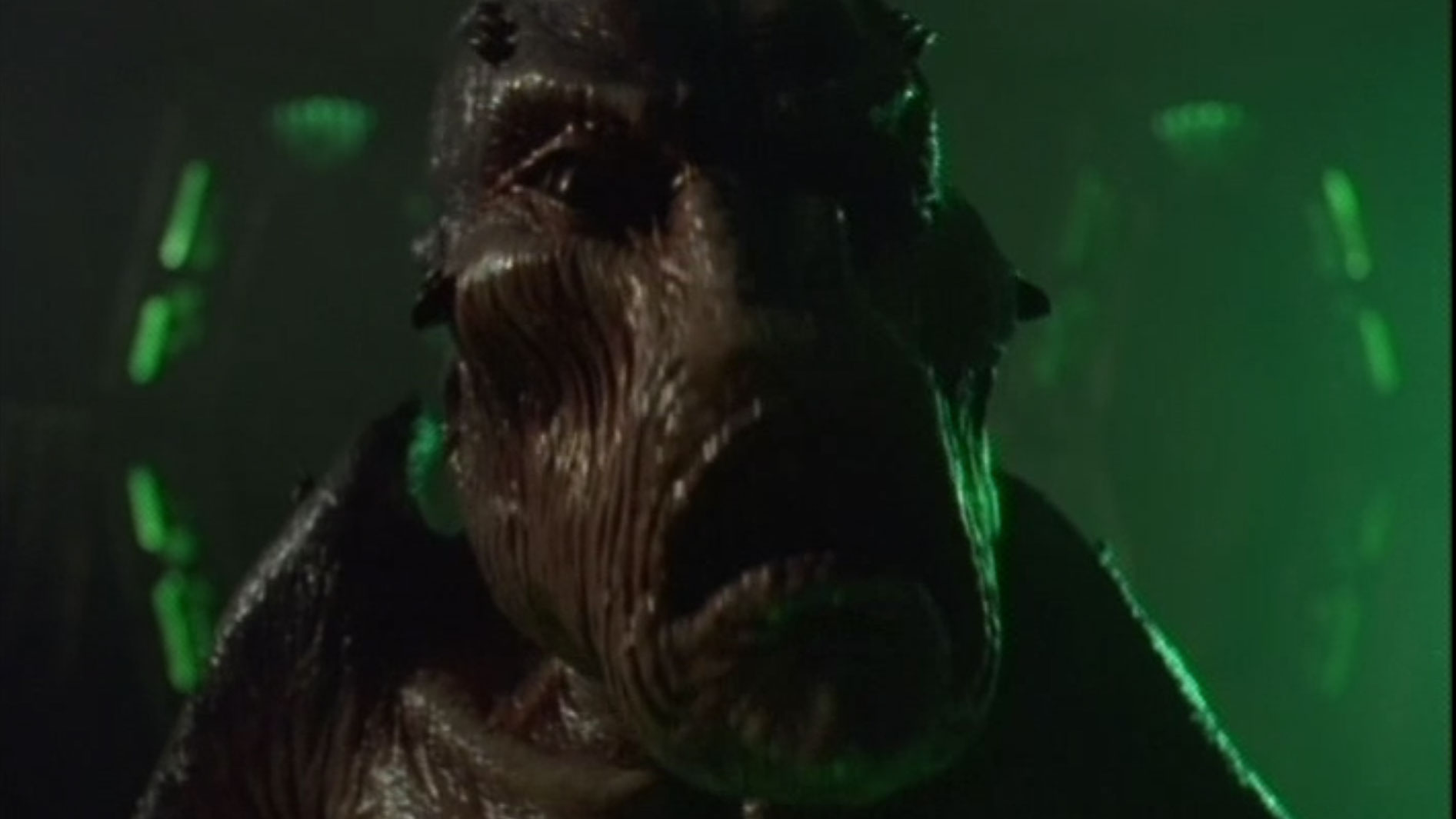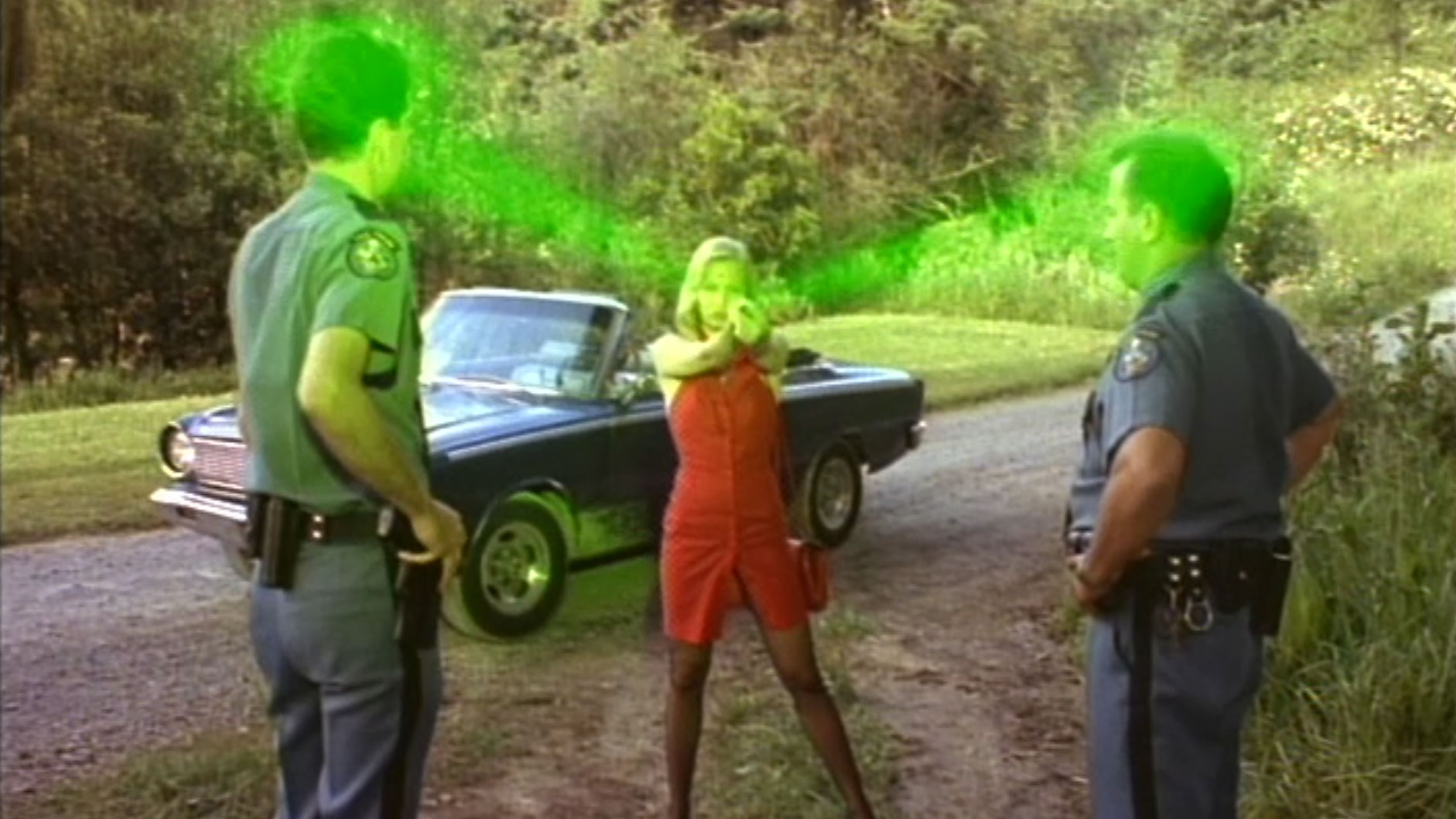Adapting Stephen King's The Tommyknockers: If The 1993 TV Miniseries Knocks At Your Door, For The Love Of God, Don’t Answer
It's hard to make a good Stephen King adaptation based on a bad Stephen King book.

While the late 1970s and 1980s marked an era of phenomenal success for Stephen King, they were also years marked by mounting issues with drug addiction and alcoholism. It’s subject matter that is featured directly and as subtext in his early work – from Jack Torrance’s failed attempt at recovery in The Shining, to the overbearing and unrelenting presence of Annie Wilkes in Misery – and ultimately it started to take an awful toll on his family and his professional life.
In his non-fiction book On Writing, King refers to Misery as one of two books that he considers his “scream for help” in dealing with his issues; the other book is The Tommyknockers. The novel was penned in 1986, and the author describes the experience in a deeply unpleasant light:
In the spring and summer of 1986 I wrote The Tommyknockers, often working until midnight with my heart running at a hundred and thirty beats a minute and cotton swabs stuck up my nose to stem the coke-induced bleeding.
After an intervention organized by his wife, Tabitha King, with friends and family confronting him about his issues, Stephen King dedicated himself to changing.
Along with Misery and The Dark Tower II: The Drawing Of The Three, The Tommyknockers was published in 1987 – and by the early 1990s the book got swept up in the craze of Hollywood adapting Stephen King as small screen events. The network television success of IT inspired a lot of similarly constructed follow-ups, and thus John Power's miniseries adaptation arrived on ABC as a two-night event on May 9-10, 1993.
Where The Tommyknockers differs from IT and the TV projects that followed it – including Mick Garris’ The Stand, Tom Holland’s The Langoliers, and Craig R. Baxley’s Storm Of The Century – is that it easily ranks as one of the worst Stephen King adaptations we’ve seen.

What The Tommyknockers Is About
While Misery is a book that requires one to read between the lines in order to register its central character as a metaphor for Stephen King’s substance abuse issues, The Tommyknockers is far more overt in its allegory. On the surface, it’s an ode to 1940s science-fiction (one of the few King books to make use of extraterrestrial antagonists), but it’s really about the grip that drugs and alcohol can have on your mind.
Your Daily Blend of Entertainment News
When one first starts using, it allures with a powerful high that has your brain flooding with endorphins and begging for more. One’s awareness and energy is raised beyond normal levels, and it changes the way one thinks. What you don’t realize all the while is what is being stolen.
Such is the nature of the alien force literally unearthed in The Tommyknockers. Author Bobbi Anderson, resident celebrity of Haven, Maine, is out walking her dog one day when she trips and falls over something jutting out of the ground. As she proceeds to touch it and dig it up, understanding that it is an alien spaceship, she is overwhelmed by a powerful feeling.
Around this same time, poet James Eric Gardener, known to those close to him as Gard, has what can be described as a career-ending drunken incident while he’s on a tour – getting smashed at a reception following a poetry reading and having an ugly confrontation with the tour organizer. After going on a bender, he resigns to kill himself, but something tells him that he needs to go see his long-time friend Bobbi Anderson first.
Gard arrives in Haven, but arriving at Bobbi’s house he is horrified to discover that she is gaunt and frail. He learns not only his friend’s discovery, but also grows to understand that it is having an influence on her behavior and capacity – for example, giving her the wherewithal to not just fix the house’s broken water heater, but to replace its energy source with what looks like a mini sun.
It’s a disturbing discovery, but what’s far more frightening is that it’s not just an effect localized to the Anderson house. While Gard is left unaffected because of a metal plate in his skull that was implanted after a skiing accident, the whole town of Haven begins to come up with spectacular and dangerous ideas.
As the story unfolds, The Tommyknockers in essence becomes a series of vignettes featuring different protagonists around Haven – and in retrospect, it’s not really a work that Stephen King is particularly proud of. In an October 2014 interview with Rolling Stone, King said,
The Tommyknockers is an awful book. That was the last one I wrote before I cleaned up my act. And I’ve thought about it a lot lately and said to myself, ‘There’s really a good book in here, underneath all the sort of spurious energy that cocaine provides, and I ought to go back.’ The book is about 700 pages long, and I’m thinking, ‘There’s probably a good 350-page novel in there.’
I, for one, wouldn’t mind seeing him undertake that effort.

How John Power’s The Tommyknockers Differs From The Book
By 1993, Lawrence D. Cohen had more experience adapting the works of Stephen King than most people. He was the first ever to do it, in fact, having written the script for Brian De Palma’s Carrie, and then 14 years later he was given the daunting task of turning the epic IT into a two-part teleplay.
Making The Tommyknockers was arguably an even greater challenge than IT, as Cohen had to narrow the focus of King’s rambling book. Also not helping matters was that director Lewis Teague, who had previously made Cujo and Cat’s Eye, was fired two days into production (according to Ian Nathan’s Stephen King At The Movies), replaced with John Power and providing a new vision for the miniseries. Put side by side with the book, many of the core elements are the same, but there are also vast differences – including whole plot lines and character arcs that get the axe.
With the action almost exclusively staying inside the town lines of Haven and centered on Bobbi Anderson (Marg Helgenberger) and James Gardner (Jimmy Smits), there is no room made in the Tommyknockers adaptation for the outsiders to discover what’s happening in the town. Stephen King dedicates multiple chapters to Anne Anderson, Bobbi’s horrible sister, and a reporter who thinks of Haven as the story that is going to make his career, but their existence isn’t even hinted at in the miniseries – presumably cut in the name of running time.
Other changes aren’t made solely to trim the story, but seemingly more for practical/resource reasons. Sheriff Ruth Merrill (Joanna Cassidy) has a doll collection in the book, and they are involved in her death, but she is actually killed when she is at the center of an explosion in the clock tower in the heart of Haven. The atmosphere given off by the spaceship isn’t shown to be nearly as toxic in the TV version – King’s book suggests non-Havenites having symptoms akin to radiation poisoning – and totally cut out of the adaptation are the numerous deadly contraptions that are designed to attack people who cross the town line. The closest the miniseries gets is the soda machine that clamps on to Trooper Butch Duggan (John Ashton) and explodes.
There is additionally a great deal changed about the nature of the aliens and their fatalistic philosophy that brought the ship to Earth in the first place, not to mention the absence of Altair-4 – the dumping planet where young David Brown (Paul McIver) is sent after being disappeared during his brother Hilly’s (Leon Woods) magic show.
Finally, there’s the ending. The TV version is what could be described as bittersweet, as Gard figures out how to fly the massive spaceship and sacrifices himself so that everyone in Haven can live – but that’s a huge left turn from the book. Not only does Gard shoot Bobbi in Stephen King’s original take, letting her die the story’s antagonist, but Haven and all those who have “become” are basically torn apart as the ship leaves the ground and then the planet.

Is It Worthy Of The King?
I write this weekly column because I love the works of Stephen King. He is a genius storyteller, one of the great creative minds of all time, and his prose is engaging, witty, and hypnotizing. The reason why “Is It Worthy Of The King?” is a regular segment in these pieces is because I hold his books and stories up to a high standard for which every adaptation should hope to match.
It’s not a universal sentiment, however. I may cherish the vast majority of his bibliography, but there are books that I also never feel the desire to revisit. The Tommyknockers is one such example. It has some interesting ideas and themes, but the trajectory of the story regularly feels aimless, and it’s the rare Stephen King story lacking in deeply human and winning characters that he typically writes so well.
This obviously puts John Power’s miniseries at a severe disadvantage when looking at it within the history of Stephen King adaptations. The one benefit the production has is that its runtime naturally solves one of the novel’s biggest problems (the directionless-ness of the book is forcibly compressed in Lawrence D. Cohen’s teleplay). In most other respects, the changes not only fail to fix the larger issues, but actually make the live-action interpretation worse than the source material.
Resources didn’t exist in 1993 that would have allowed a TV production to properly realize many of the bat shit insane ideas Stephen King commits to the page in The Tommyknockers, and it’s for dumb reasons like that that there are a stupid number of scenes where Nancy Voss makes threats with her lipstick/disintegrating ray. It barely scratches the surface as far as depicting the poisonous atmosphere that is depicted in the book, mostly because it excises almost all of the stories about outsiders coming into town, and while you’d think that would allow for better development of the citizens of Haven, that’s not featured either.
Jimmy Smits’ version of Gard is certainly more likable than his counterpart in the text (the fact that he doesn’t spend a shocking amount of the narrative being a helpless drunk is a huge bonus), and Marg Helgenberger does what she can with the material as Bobbi Anderson – but the performances from just about everyone else in the cast are cringe-inducing. Of the ensemble, my favorite is actually Allyce Beasley’s Deputy Becka Paulson, who gets some satisfying revenge on her cheating husband (Cliff DeYoung), but she is gone from the adaptation by the time the first half is over.
It’s not precisely a favorite of Stephen King’s either. Discussing the positive relationship between his work and the TV miniseries medium in an interview for Tony Magistrale’s Hollywood’s Stephen King, he explained that The Tommyknockers is an exception to what is generally a happy fit, saying,
I think my novels are much better suited for miniseries presentations. I didn't care very much for The Tommyknockers because it just didn't seem that the people doing it got behind the project sufficiently and felt the story.
I obviously go much further in my criticism. John Power's The Tommyknockers is a rough translation of a slog of a book, and while it surely has its fans and advocates (everything in pop culture does), I’m an individual who is hard-pressed to say anything legitimately nice about it.

How To Watch John Power’s The Tommyknockers
Do you not trust my opinion and/or have masochistic tendencies? Then you can check out The Tommyknockers miniseries for yourself – but know that it’s not particularly easy to do. It hasn’t yet made its world into the world of HD, and there are no legal digital options to watch it. The only domestic option available to watch the adaptation is the single flip-disc DVD that was released by Tristar back in 2000 – the silver lining being that it is widely available and inexpensive.
Excited to read a more positive take on a Stephen King adaptation? Well, you should look forward to next week, as I’ll be doing a deep dive into Fraser Clarke Heston's Needful Things – a film in the expansive canon that I view as one of the more underrated entries. Look for it in the CinemaBlend movie section next Wednesday, and you can find my previous Adapting Stephen King columns by clicking through the banners below.







Eric Eisenberg is the Assistant Managing Editor at CinemaBlend. After graduating Boston University and earning a bachelor’s degree in journalism, he took a part-time job as a staff writer for CinemaBlend, and after six months was offered the opportunity to move to Los Angeles and take on a newly created West Coast Editor position. Over a decade later, he's continuing to advance his interests and expertise. In addition to conducting filmmaker interviews and contributing to the news and feature content of the site, Eric also oversees the Movie Reviews section, writes the the weekend box office report (published Sundays), and is the site's resident Stephen King expert. He has two King-related columns.
